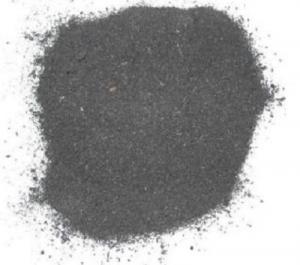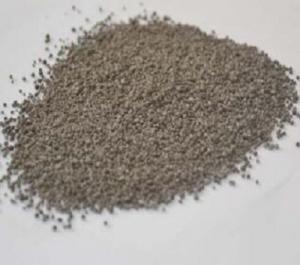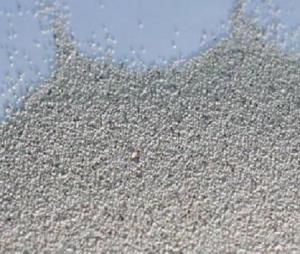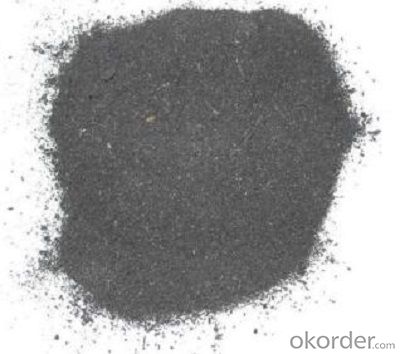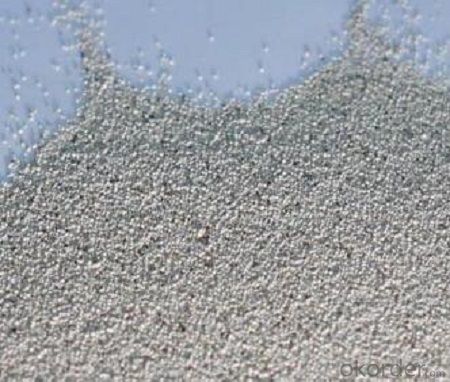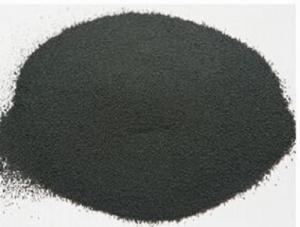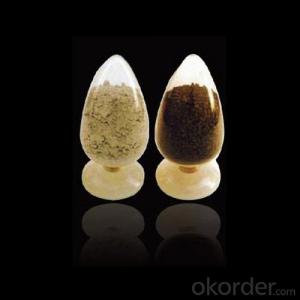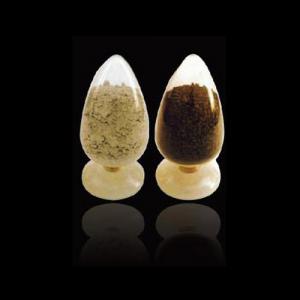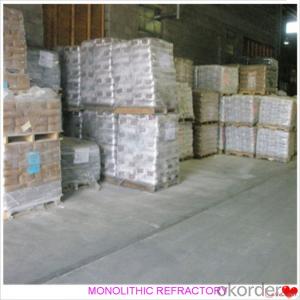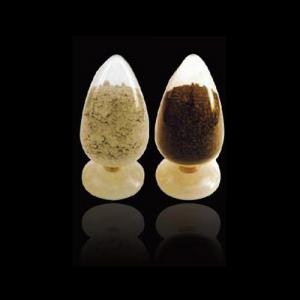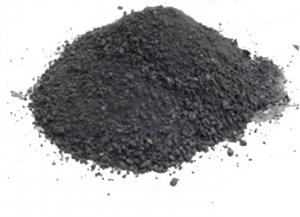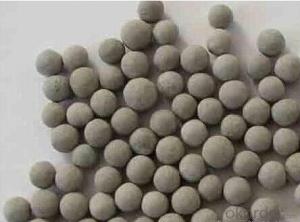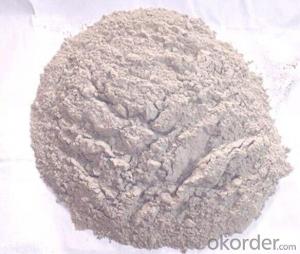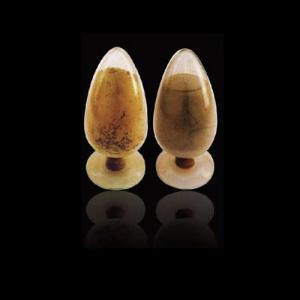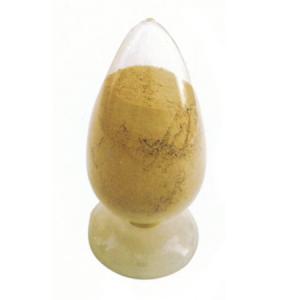Monolithic Refractories for Iron and Steel Industry - Covering Fluxes and Powders
- Loading Port:
- Tianjin
- Payment Terms:
- TT or LC
- Min Order Qty:
- 10 m.t.
- Supply Capability:
- 100000 m.t./month
OKorder Service Pledge
OKorder Financial Service
You Might Also Like
Product Description:
We offer a series of covering flux products including both fine-grained powders and hollow granulated fluxes, so it’s possible for customer to select a suitable material according to operational parameters of each specific application.
Generally for tundish application factors affecting product performance result to be steel grade, exposed steel surface to be covered, casting time, and sequence index.
Regarding ladle applications, critical factors are chiefly the amount and the characteristics of the refining slag.
Increasing demand of better quality steel and subsequent use of high performance basic tundish lining material boosted researching and developing of active basic tundish powders assuring high covering, insulating properties and low corrosion activity.
Moreover, effective NMI (non-metallic inclusions) absorption capability is provided by specific viscosity and surface tension of molten slag layer in direct contact with molten steel.
Plant experience in using these active basic tundish powders gave improved steel cleanness.
Insulating covering fluxes for tundish and ladle
We offer two types of insulating covering fluxes :
Rice ash, with high levels of thermal insulation
Fly ash mixtures, with high levels of thermal insulation and protection against re-oxidation
Insulating MgO-based covering fluxes
Spray-dried covering powders based on magnesite and with very low silica content, with good thermal insulation properties, protection against re-oxidation and low refractory erosion.
Active basic powders
We offer two types of active basic powders:
Active basic powders for tundish (CaO-based) in fine-grain powders and granulated form to maximize absorption of NMI.
Calcium aluminate based material is well known to give metallurgical active slags able to prevent sulphur pick up to the steel. It offers the potential for oxide pick-up and protection against re-oxidation. It is a material obtained by complete melting in high-capacity furnaces of bauxite and limestone. Because such materials have poor insulating properties, it is necessary to add an additional insulating compound on top.
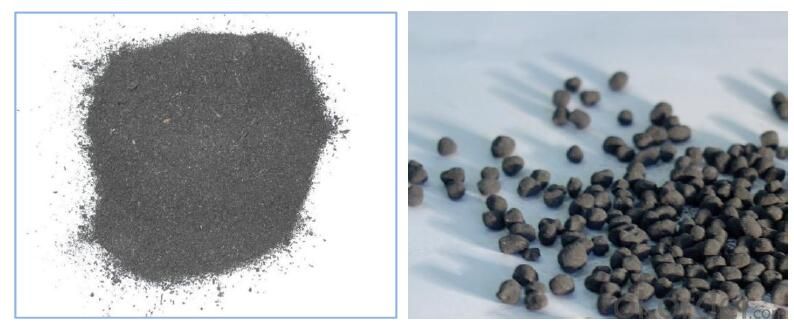
FAQ
Q:Are you a trading company or manufacturer?
A:CNBM is a large-scale central governmental industrial group with its own manufacturing sector, research and development sector, trading sector and logistics sector.
Q:I have some special requirement about specifications.
A:We have a well-rounded product range, which endows us with the capability of applying many special specifications. Please feel free to contact us with yours.
Q:Do you accept OEM service?
A:Yes, we do.
Q:What is your delivery time?
A:It depends on the size/complexity of your order and our own production schedule. Usually we provide a faster delivery than the industry's average.
Q:What is the payment term?
A:Our payment terms are negotiable.
Q:Can I have my own logo on the product?
A:Sure, we can apply your own logo on the products according to your drawings.
- Q: How do monolithic refractories impact the quality of iron and steel products?
- The quality of iron and steel products is greatly influenced by monolithic refractories. These refractories are extensively used in the lining of furnaces and other high-temperature environments where iron and steel undergo processing. To begin with, monolithic refractories play a vital role in insulating and safeguarding the furnace lining from the intense heat generated during the manufacturing of iron and steel. By maintaining the desired temperature, these refractories ensure consistent and proper heating of the metal, thereby achieving the desired product quality. Inadequate insulation would result in significant heat loss, leading to inefficient energy consumption and inconsistent product quality. Additionally, monolithic refractories have a significant impact on the overall cleanliness of iron and steel. During the production process, impurities and slag are formed, which can contaminate the metal if not managed properly. Refractories with high resistance to slag penetration and corrosion prevent these impurities from infiltrating the metal, ensuring a cleaner and purer final product. Moreover, monolithic refractories also contribute to the mechanical strength and durability of the furnace lining. The lining must withstand the harsh conditions and repeated thermal shocks encountered during the production process of iron and steel. A sturdy and well-designed refractory lining can resist cracking, spalling, and erosion, thereby prolonging the furnace's lifespan and reducing the risk of downtime. In conclusion, monolithic refractories have a profound impact on the quality of iron and steel products. They provide thermal insulation, prevent contamination, and ensure the mechanical integrity of the furnace lining. Manufacturers can optimize their production processes, enhance product quality, and improve overall operational efficiency by selecting the appropriate refractory material and maintaining it correctly.
- Q: How do monolithic refractories perform in aluminum holding furnace applications?
- Monolithic refractories perform exceptionally well in aluminum holding furnace applications due to their high thermal conductivity, excellent resistance to thermal shock, and superior mechanical strength. They can withstand the extreme temperatures and harsh chemical environments found in these furnaces, ensuring long-lasting and efficient operations. Additionally, monolithic refractories offer easy installation and maintenance, making them a preferred choice in aluminum holding furnace applications.
- Q: How do monolithic refractories help in enhancing the durability of iron and steel furnaces?
- Monolithic refractories play a crucial role in enhancing the durability of iron and steel furnaces due to their unique properties and characteristics. These materials are designed to withstand extremely high temperatures and harsh conditions, making them ideal for lining the furnaces. Firstly, monolithic refractories have excellent thermal resistance, meaning they can withstand extreme heat without losing their structural integrity. Iron and steel furnaces operate at incredibly high temperatures, sometimes exceeding 2,000 degrees Celsius. Regular bricks or other materials would not be able to withstand such temperatures, leading to frequent repairs and maintenance. Monolithic refractories, on the other hand, can handle these extreme temperatures without deteriorating, thus enhancing the durability of the furnaces. Secondly, monolithic refractories have high resistance to chemical attack. In iron and steel production, the materials being processed often contain various impurities and aggressive chemicals. These substances can react with the furnace lining and cause corrosion or erosion over time. However, monolithic refractories have a high resistance to chemical attack, ensuring that the lining remains intact and durable even in the presence of corrosive elements. Furthermore, monolithic refractories have excellent mechanical strength and abrasion resistance. Iron and steel furnaces experience mechanical stress and abrasion due to the movement of raw materials, the stirring of molten metal, and the tapping of the furnace. The lining needs to withstand this constant wear and tear without breaking or cracking. Monolithic refractories have superior mechanical strength and can resist abrasion, ensuring that the furnace remains durable and functional for a longer period. Additionally, monolithic refractories offer exceptional thermal shock resistance. The lining of iron and steel furnaces is subjected to rapid temperature changes during various stages of production. These temperature fluctuations can cause thermal stress and lead to cracking or spalling of the lining. However, monolithic refractories have low thermal conductivity and can withstand thermal shock, preventing any damage to the furnace lining and enhancing its durability. In summary, monolithic refractories help enhance the durability of iron and steel furnaces by providing excellent thermal resistance, high resistance to chemical attack, superior mechanical strength and abrasion resistance, as well as exceptional thermal shock resistance. These properties ensure that the furnace lining remains intact, withstands extreme temperatures, and resists the corrosive and abrasive nature of the materials being processed, ultimately prolonging the life of the furnace and reducing the need for frequent repairs or replacements.
- Q: How do monolithic refractories impact the quality and performance of iron and steel products?
- Monolithic refractories play a crucial role in influencing the quality and performance of iron and steel products. These refractories, which are composed of a single, solid structure, are used to line the furnaces and other high-temperature processing equipment in the iron and steel industry. The use of monolithic refractories ensures enhanced thermal insulation, corrosion resistance, and stability in the furnace lining. This results in improved energy efficiency and reduced heat loss during the manufacturing process. Additionally, monolithic refractories offer excellent resistance to thermal shock, meaning they can withstand rapid changes in temperature without cracking or deteriorating. The quality and performance of iron and steel products are greatly impacted by the consistent and uniform heat distribution provided by monolithic refractories. This leads to superior metallurgical properties and improved product quality, such as increased strength, enhanced durability, and better surface finish. Furthermore, monolithic refractories contribute to the overall productivity and cost-effectiveness of the iron and steel industry. Their high refractoriness and low maintenance requirements result in extended furnace lining life, reducing downtime and increasing production capacity. This, in turn, leads to higher yields and improved profitability for iron and steel manufacturers. In summary, monolithic refractories have a significant positive impact on the quality and performance of iron and steel products by providing efficient thermal insulation, superior heat distribution, and increased resistance to thermal shock. Their use enhances product quality, productivity, and cost-effectiveness in the iron and steel industry.
- Q: What are the challenges in recycling and disposing of monolithic refractories?
- Recycling and disposing of monolithic refractories pose several challenges that need to be addressed in order to minimize environmental impact and maximize resource efficiency. One of the main challenges is the handling and transportation of monolithic refractories due to their heavy and bulky nature. These materials are often used in high-temperature applications, such as furnace linings, and can be difficult to dismantle and remove from equipment. The weight and size of monolithic refractories make it challenging to transport them to recycling or disposal facilities, requiring specialized equipment and infrastructure. Another challenge is the heterogeneity of monolithic refractories, which often contain various types of refractory materials, binders, and additives. This complexity makes it difficult to separate and categorize different components for effective recycling. The lack of standardized recycling processes for monolithic refractories further complicates the recycling efforts. Furthermore, the high melting points of refractory materials used in monolithic refractories can make it energy-intensive and costly to recycle them through conventional methods like melting and remolding. Alternative recycling methods, such as thermal treatment or chemical processing, need to be explored and optimized to make the recycling process more economically and environmentally viable. Ensuring the proper disposal of monolithic refractories is also a challenge. If these materials are not recycled, they often end up in landfills, taking up valuable space and potentially leaching harmful substances into the environment. Landfilling refractories can also pose a risk of contamination if they are not properly managed or if hazardous additives are present in the materials. To address these challenges, it is crucial to invest in research and development to develop more efficient and cost-effective recycling technologies for monolithic refractories. Collaboration between manufacturers, recycling facilities, and regulatory bodies is also essential to establish guidelines and standards for the recycling and disposal of these materials. Additionally, educating industries and end-users about the importance of recycling and the availability of recycling options can help increase the demand and feasibility of recycling monolithic refractories.
- Q: How long is the lifespan of monolithic refractories in iron and steel applications?
- The lifespan of monolithic refractories in iron and steel applications can vary depending on several factors. These factors include the type of refractory material used, the specific application, the operational conditions, and the maintenance practices implemented. In general, monolithic refractories used in iron and steel applications are designed to withstand high temperatures, thermal shock, chemical attack, and mechanical stress. They are expected to have a relatively long lifespan compared to other refractory materials. Under normal operating conditions and proper maintenance, monolithic refractories can typically last anywhere from several months to several years in iron and steel applications. However, it is important to note that certain areas of the application may experience more severe conditions and may require more frequent repairs or replacements. Regular inspections and monitoring of the refractories' condition are crucial to identify any signs of deterioration or damage. Any necessary repairs or replacements should be carried out promptly to prevent further damage and minimize downtime. It is also worth mentioning that advancements in refractory technology and materials have led to the development of more durable and long-lasting monolithic refractories. These advancements have increased the lifespan of refractories in iron and steel applications, ultimately improving the overall efficiency and productivity of the operations.
- Q: How do monolithic refractories contribute to the efficiency of iron and steel production?
- Monolithic refractories play a crucial role in improving the efficiency of iron and steel production by providing superior thermal insulation and resistance to high temperatures, resulting in reduced heat loss and improved energy efficiency. Additionally, these refractories offer excellent mechanical strength and chemical resistance, enabling them to withstand the harsh conditions within the production process, leading to increased durability and extended service life. Their ability to be easily shaped and installed also facilitates faster maintenance and repair, minimizing downtime and enhancing overall operational efficiency in the iron and steel industry.
- Q: How do monolithic refractories prevent thermal shock in the iron and steel industry?
- Monolithic refractories prevent thermal shock in the iron and steel industry by providing a continuous and seamless lining that can withstand extreme temperatures and sudden temperature changes. Their high thermal conductivity and low thermal expansion properties allow them to effectively distribute and absorb heat, reducing the likelihood of thermal stress and cracking. Additionally, their ability to form strong bonds with the furnace walls prevents the entry of hot gases and molten metal, further protecting against thermal shock.
- Q: How do monolithic refractories withstand chemical attack from molten metals and slag?
- Due to their unique composition and structure, monolithic refractories exhibit high resistance to chemical attack from molten metals and slag. Unlike refractories with joints or seams, monolithic refractories are made from a single, solid piece, minimizing the chance of chemical penetration. The ability to withstand chemical attack is attributed to several factors. Firstly, monolithic refractories have a high melting point, which surpasses the temperature of the molten substances they encounter. This prevents them from melting or deforming upon contact with hot metals or slag. Additionally, the chemical resistance of monolithic refractories is enhanced by their formulation with materials that possess excellent resistance to chemicals. These materials, such as alumina, magnesia, and zirconia, form stable compounds and have a strong affinity for oxygen. Consequently, when exposed to molten substances, the refractories develop a protective oxide layer on their surface, effectively shielding them from chemical attack. Furthermore, the dense and compact structure of monolithic refractories plays a crucial role in their ability to resist chemical attack. The absence of joints and seams reduces the chances of molten metals and slag infiltrating the refractories and initiating chemical reactions. This dense structure also reduces the porosity of the material, making it less permeable to aggressive substances. Moreover, manufacturers often incorporate specialized additives, such as fibers, binders, and corrosion inhibitors, into monolithic refractories to further enhance their chemical resistance. These additives contribute to the refractories' ability to withstand chemical attack. In conclusion, monolithic refractories are designed to endure chemical attack from molten metals and slag through their high melting point, chemically resistant composition, dense structure, and specialized additives. These properties enable them to maintain their integrity and performance even in the most challenging environments, making them an ideal choice for applications involving high temperatures and corrosive substances.
- Q: What are the recommended storage and handling practices for monolithic refractories?
- The recommended storage and handling practices for monolithic refractories are crucial to ensure their optimal performance and longevity. Here are some key practices to follow: 1. Storage: Monolithic refractories should be stored in a clean, dry, and well-ventilated area. The storage facility should be protected from moisture, extreme temperatures, and direct exposure to sunlight. Ideally, the refractories should be stored on pallets or racks to prevent contact with the ground and minimize the risk of damage. 2. Handling: It is essential to handle monolithic refractories with care to avoid any physical damage. Refractories should be lifted and moved using appropriate lifting equipment, such as forklifts or cranes, to prevent excessive stress or strain on the material. Avoid dropping or dragging the refractories, as this can lead to cracks or fractures. 3. Packaging: If the monolithic refractories are supplied in packaging, it is important to inspect the packaging for any signs of damage or moisture before accepting the delivery. Damaged packaging can indicate potential damage to the refractory material. If any anomalies are noticed, it is advisable to inform the supplier immediately. 4. Moisture control: Monolithic refractories are susceptible to moisture absorption, which can lead to reduced performance and structural integrity. It is crucial to protect the refractories from direct contact with water or excessive humidity during storage and handling. If refractories become wet, they should be dried thoroughly before use to eliminate any absorbed moisture. 5. Stack height: When storing monolithic refractories, it is important to consider the stack height. Excessive stacking can result in pressure on the lower layers, leading to deformation or cracking. Follow the manufacturer's recommendations for maximum stack height to ensure the refractories' structural integrity. 6. Regular inspection: Regularly inspect the refractory material for any signs of damage or degradation during storage and handling. Look for cracks, spalling, or any other visible abnormalities. If any issues are identified, consult the manufacturer or a refractory expert for guidance on whether the material is still suitable for use. By following these recommended storage and handling practices, you can minimize the risk of damage to monolithic refractories and optimize their performance, ultimately extending their service life and ensuring their effectiveness in high-temperature applications.
Send your message to us
Monolithic Refractories for Iron and Steel Industry - Covering Fluxes and Powders
- Loading Port:
- Tianjin
- Payment Terms:
- TT or LC
- Min Order Qty:
- 10 m.t.
- Supply Capability:
- 100000 m.t./month
OKorder Service Pledge
OKorder Financial Service
Similar products
Hot products
Hot Searches
Related keywords
